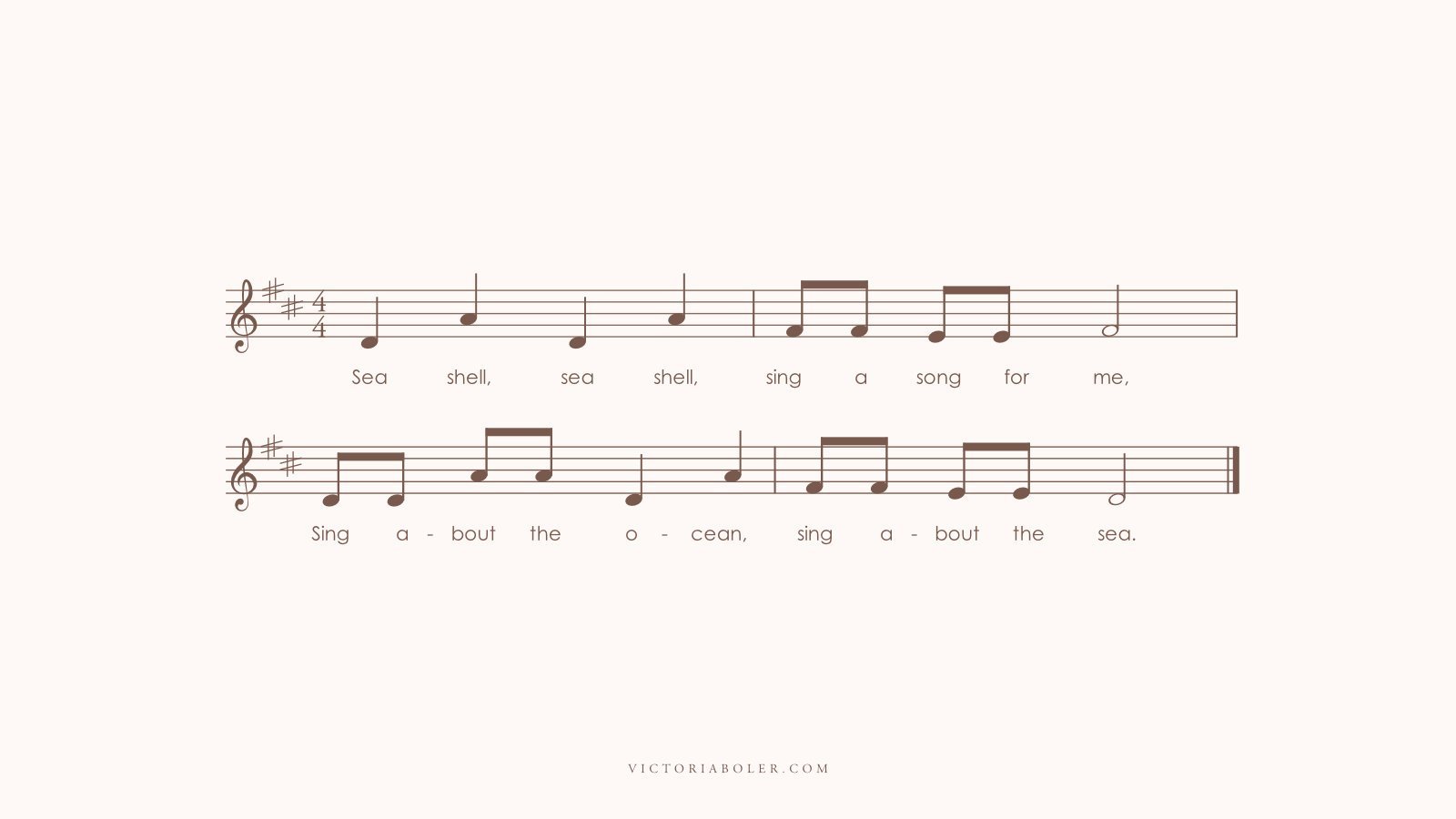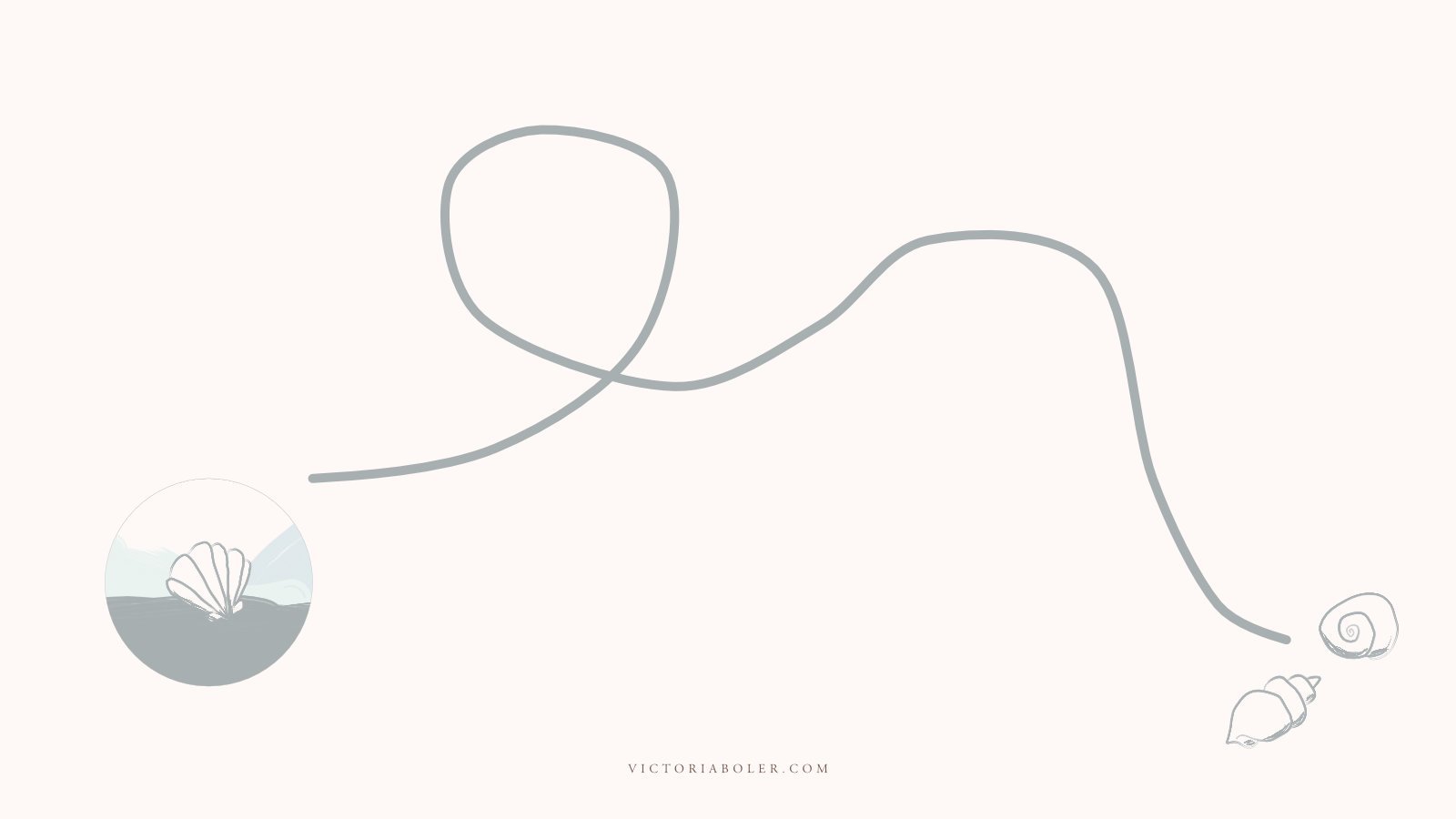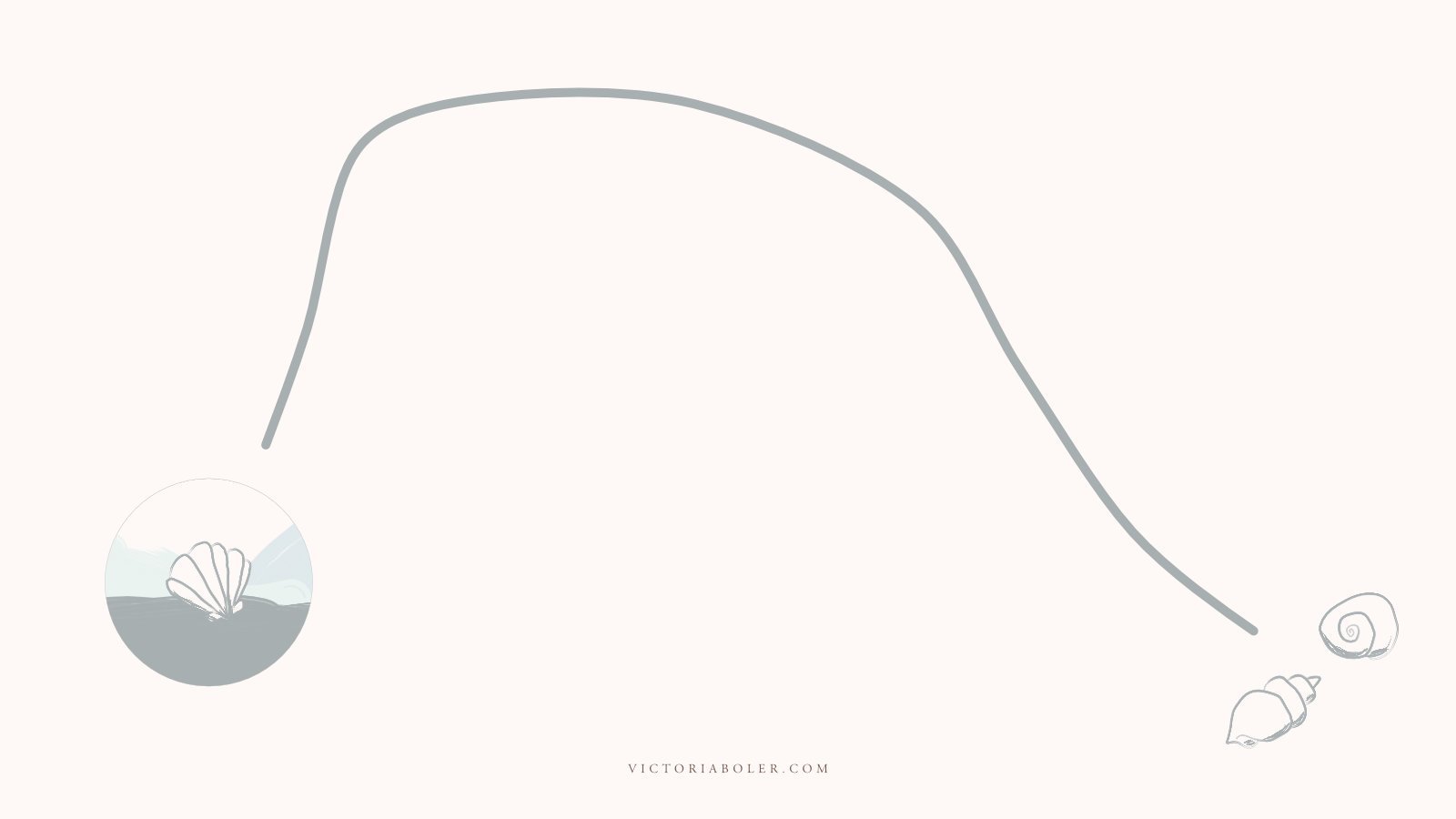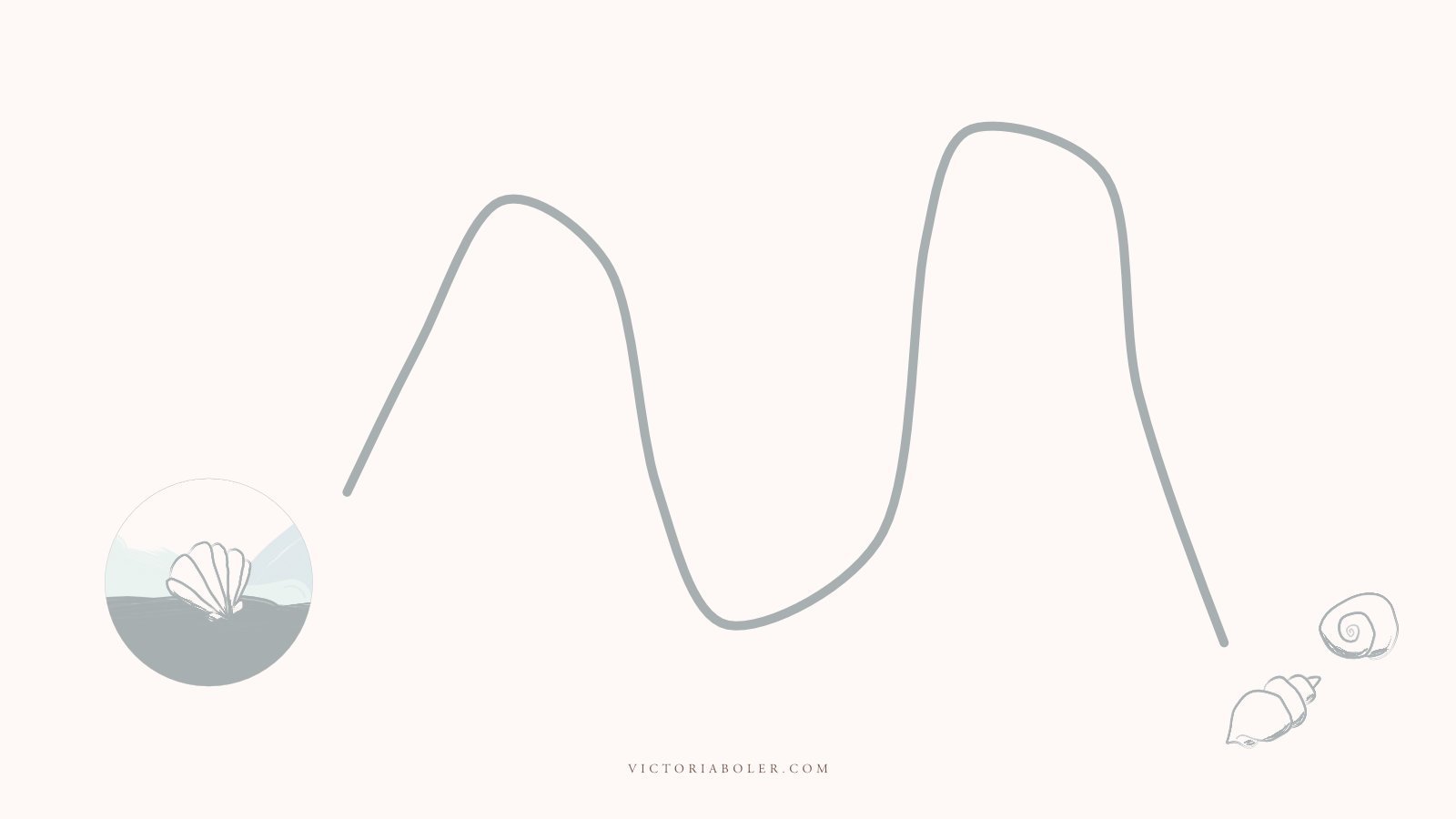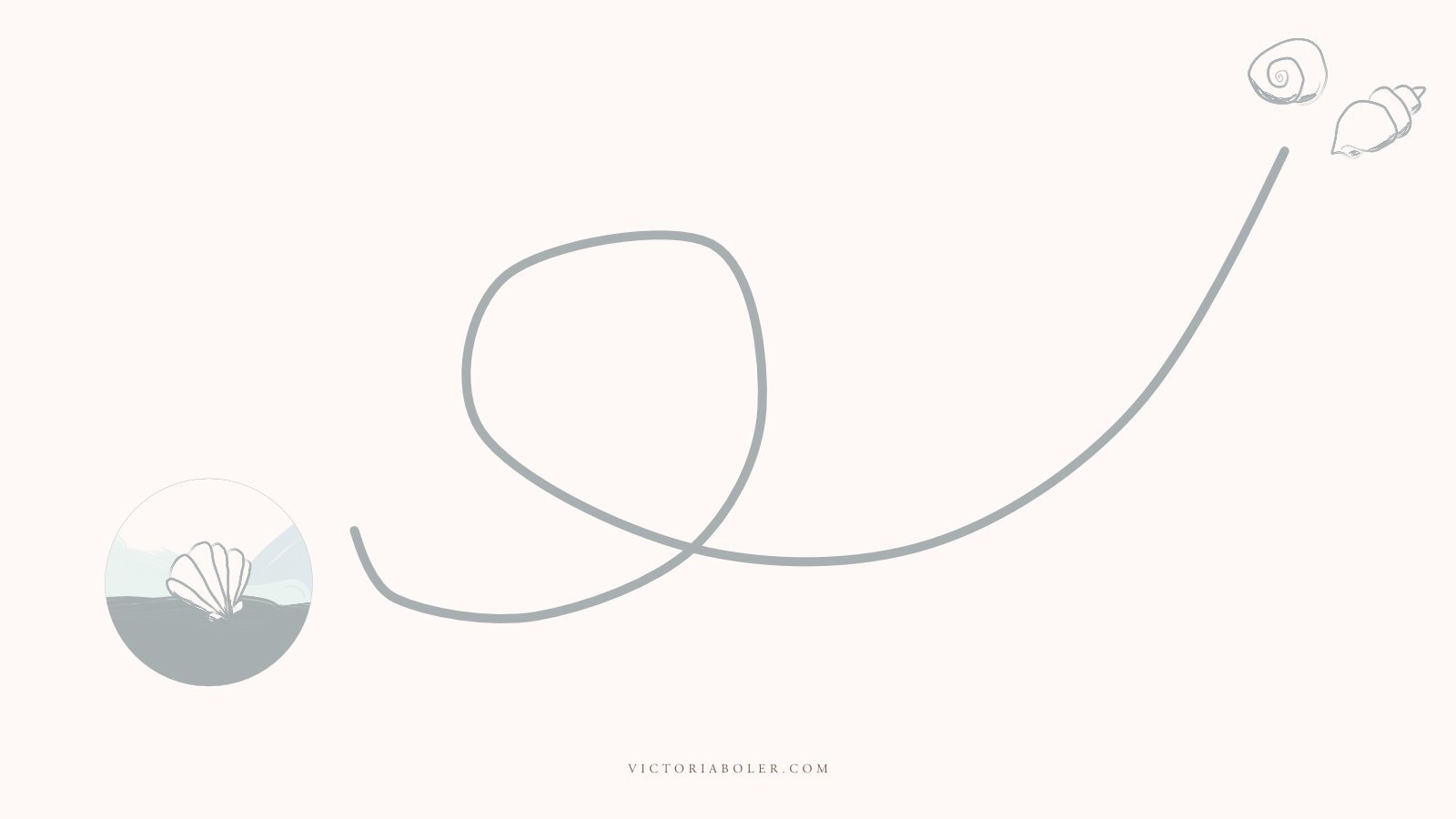One Song, Three Teaching Processes: Sea Shell
There are times we come across a song or rhyme we know students would enjoy, but we might not be sure where it fits in the curriculum.
How can we step back and imagine musical possibilities? What if we were to treat songs like musical prompts?
In this post we talked about some ways to explore one rhyme with several different pedagogical lenses.
Today we’ll do the same for a song, Sea Shell. Here’s an example of how one song might be used for three different pedagogical outcomes and three different age groups.
This also shows how we might approach the song in different areas of learning: The first activities are for students who don’t know the song. The next two, it’s expected that students would know the song already. The 2nd grade activities are in preparation, before students are aware of the notation and label for half note. The 3rd grade activities are in practice, after students consciously know low sol.
Each grade objective includes student choice in the activities.
Let’s jump in!
The Song
This song is sourced from the collection at Holy Names University.
Echo Singing & Vocal Exploration
Kindergarten / 1st Grade
This activity is designed for young musical learners in the early grades.
Before the Activity: Previous Knowledge and Experience
This activity doesn’t require any previous knowledge or experience! Consider using this as an introduction to vocal exploration and add it to your collection of echo songs.
Learning Experiences
Experience #1: Introduce
In this first learning experience, the teacher introduces the song through movement and active listening.
Seated, the teacher sings the song and leads students in swaying side to side as they listen.
In between rounds of the song, the teacher asks questions: “What is our song about?” “What do you think the sea shell is singing about?” “Wait, can sea shells actually sing?”
Sing while moving hands like the waves of the ocean, showing the melodic contour of the song. Students echo each four-beat phrase with ocean movements.
Sea shell, sea shell (sea shell sea shell), Sing a song for me (sing a song for me)
Experience #2: Ocean Movements
In this second experience, students extend their ocean movements and continue echoing the song. This learning experience is primarily a review and reinforcement of the previous class, giving students more opportunities to listen and move to the song.
Review the previous class: Sing while moving hands like the waves of the ocean, showing the melodic contour of the song.
Students echo each four-beat phrase with ocean movements.
Sea shell, sea shell (sea shell sea shell), Sing a song for me (sing a song for me)
“What if you could make your ocean movements while standing on your spot?”
Repeat the activity with students echo singing and showing the melodic contour with stationary movement
Experience #3: Whole-Class Pitch Exploration
There are many possibilities for the pitch exploration here! Feel free to write your own on the board.
Echo sing and move to the song as review
“What do you think the sea shell’s song sounded like?” Show several options of melodic contour on the board, and lead students in performing with vocals and movements
Experience #4: Partner Pitch Exploration
Students have sung the song and explored many examples of pitch exploration. Now it’s time for them to create their own sea shell songs. Asking for four different options encourages students to invent variations, instead of stopping after one idea.
Echo sing and move to the song as review
Review pitch exploration ideas on the board
With their shoulder partner, students use a piece of yarn to create their own vocal explorations
Ask students to come up with four different options
Students take turns sharing their ideas with the class
Half Note & Form
2nd Grade
Many music curricula explore one sound over two beats in the 2nd grade year. The ocean theme of this song can make it convenient for exploring elongated sounds, like ocean waves. We can also experiment with the form of the song.
Before the Activity: Previous Knowledge and Experience
Previous Knowledge: Before this activity, students should have conscious knowledge of steady beat, quarter notes, and eighth notes. Even though the activity focuses on one sound over two beats, students don’t need to have conscious knowledge of half notes. In future classes, students will be introduced to the half note vocabulary and symbol we’ll use in this class.
Previous Experience: Students should have plenty of independent and collaborative experiences singing, playing instruments, speaking, moving, reading, writing, improvising, arranging, and aurally identifying the rhythmic set listed in the knowledge section above. For these activities, students should have heard the song before, though it does not need to be memorized for the first learning experiences.
Learning Experiences
Experience #1: Rhythm Movement
In this first learning experience, students use movement to show the duration of the rhythm. This happens as a whole class at first, then with pairs of students. There is an opportunity for formative assessment as students tiptoe, step, and slide with a partner at the end of this experience.
The teacher sings the song with movement directions for tiptoe, step, and slide. Students echo sing and move (locomotor or non-locomotor)
Step step step step (students echo)
Tiptoe tiptoe sliiiiiiide (students echo)
Tiptoe tiptoe step step (students echo)
Tiptoe tiptoe sliiiiiiide (students echo)
The teacher sings the song on text. Students echo sing and move, translating to tiptoe, step, and sliding movements
Sea shell sea shell (student sing text and step step step step)
Sing a song for me (students sing text and tiptoe tiptoe sliiiiiiide)
Sing about the ocean (students sing text and tiptoe tiptoe step step)
Sing about the sea (students sing text and tiptoe tiptoe sliiiiiiide)
Divide the class in half. One half sings and moves first, then pauses for the other partner to sing and echo
Experience #2: Aurally Identify
The movement work from the previous class is extended here, as the teacher takes away the movement directions and replaces them with an instrument or neutral syllable. Students use their aural awareness to identify one sound that lasts for two beats.
Review previous class. Students echo sing the song on text
“Let’s take out the echo and sing it straight through.” Students sing the song straight through, without echoing.
Students sing the whole song and clap the words, remaining seated
Seated with their feet in front of them, students sing and put the rhythm of the words in their feet
Students stand, and sing the whole song while tiptoeing and stepping in open space
As a B section, the teacher plays four or eight-beat rhythms on a recorder (or sings on a neutral syllable), using a combination of two sounds on a beat, one sound on a beat, or one sound elongated over two beats. Students echo move.
Example: ta ta ta-a (students step step sliiiiiiide), ta-di ta-di ta-di ta (tiptoe tiptoe tiptoe step) ta-a ta-di ta (sliiiiiiide tiptoe step) ta-di ta-di ta-a (tiptoe tiptoe sliiiiiide)
Students sing the song as they tiptoe, step, and slide back to their spots.
“How many times do we slide in this song?” Students inner hear and pat a steady beat (we slide two times)
“How many sounds do you hear in the word, ‘me’?” (one sound) “How many beats does it last?” Students sing and pat a steady beat (it lasts two beats)
Experience #3: Visual & Form
Students have identified one sound that lasts for two beats. Now they use their aural awareness and translate it to a visual representation of the rhythm. Iconic notation is used here to show the elongated sound. In later lessons, the label and symbol for a half note may be used. At the end of the learning experience, students mix up the form to create a new order of the song.
Review previous experiences as necessary
“Which phrases of the song have matching rhythms?” Students sing and pat a steady beat (phrases 2 and 4 have matching rhythms)
Help the teacher put the phrases of the song in the correct order.
“How do you know this is the correct answer? Talk to your shoulder partner.”
Students explain their thinking, then share their answers as time allows
“I’m tired of giving the correct answer all the time. Let’s mix up the form so it’s the incorrect answer.”
Mix up the form to create new version of tiptoeing and sliding. Students speak the new combination while moving their feet in front of them (staying seated) or turning their fingers into people and moving on the floor in front of them.
Repeat the activity, with students arranging the form for the class
Students repeat the activity with a partner and move around the room to their arrangement.
Share combinations as time allows
Low Sol & Partwork
3rd Grade
By the 3rd grade year, many students are ready to work on the extended pentatone, including low sol. As melodic vocabulary grows, students can apply their knowledge to their developing partwork skills.
Before the Activity: Previous Knowledge and Experience
Previous Knowledge: Before this activity, students should have conscious knowledge of solfege pitches, do, re, mi, sol, la, low la, low sol. These learning experiences would fall in to the “practice” phase of learning.
Previous Experience: This activity is for students who are ready to sing a bass line to a known song. Consider previous experiences students have had with bass lines and partner melodies to prepare them for these experiences. You can find more information about scaffolding vocal partwork skills here. Students should also already know the song for these experiences.
Learning Experiences
These are adapted from the low sol concept plan in the 2021 - 2022 Planning Binder.
Experience #1: Partner Melody & Movement
In this learning experience, students listen to the new partner melody with the song. After hearing the melody, students learn it by rote through a combination of movement and aural skills. Aurally decoding the melody is one of the reasons this experience should fall in the practice phase of the learning process. When students have learned the melody, they sing it as the teacher sings the main song.
Students walk in a circle, singing the song without teacher assistance
“I’ll try to mess you up this time. Listen to each other.” The teacher walks inside the circle in the opposite direction, singing the partner melody:
Students sit in place. The teacher teaches the partner melody by rote. Students echo sing eight beats at a time, showing the high and low movements of the melodic contour
The teacher sings eight beats at a time. Students echo on solfege with Curwen hand signs or with the movements they just created
“Hey there, let me hear your song” (do do do do sol sol sol)
“Hey there, then we’ll sing along” (do do sol sol do do do)
Students walk around in a circle, singing the partner melody without teacher assistance. The teacher walks around the inside of the circle singing the main melody of Sea Shell.
Experience #2: Partwork
This lesson experience reviews the melody from the previous class, and expands partwork skills. Instead of the teacher singing one part and the whole class singing the other, students work toward partwork interdependence by dividing the partner melody and main melody between half the class.
With a partner, students decide if they’ll sing the partner melody on solfege with hand signs, or on text with movement that matches the melodic contour.
Seated with their partner, students perform their choice, then switch jobs
Students walk around in a circle, singing the partner melody without teacher assistance. The teacher walks around the inside of the circle singing the main melody of Sea Shell.
The teacher “tags” a few volunteers to be on the inside circle team and sing the main melody. The rest of the class continues to sing the partner melody.
Continue tagging singers until the inside and outside groups are approximately even
Experience #3: Transfer to Barred Instruments
Students have already aurally identified low sol in the partner melody. When it’s time to transfer their understanding to a barred instrument, students use their knowledge of steps and skips to identify low sol and figure out the partner melody by ear.
With a partner, students decide if they’ll sing the partner melody on solfege with hand signs, or on text with movement that matches the melodic contour.
Seated with their partner, students perform their choice, then switch jobs
Using a barred instrument visual on the board, students work with their partner to figure out where do and low sol live if do is F.
Students help the teacher notate the melody of the partner song on the board
Students read the notation on the board, pointing to the notation or pointing to a barred instrument visual
With a partner, students sit behind a barred instrument and figure out how to play the partner melody by ear.
One partner plays and sings the partner melody. The student without mallets sings the main Sea Shell melody. Switch jobs.
When we step back and look at our classroom materials as musical prompts, we see many pedagogical possibilities.
Today we looked at how one song might be used for vocal exploration, half notes, and low sol. But there are so many more ways this song might be re-imagined in our teaching.
There are many possibilities with one simple musical invitation!


